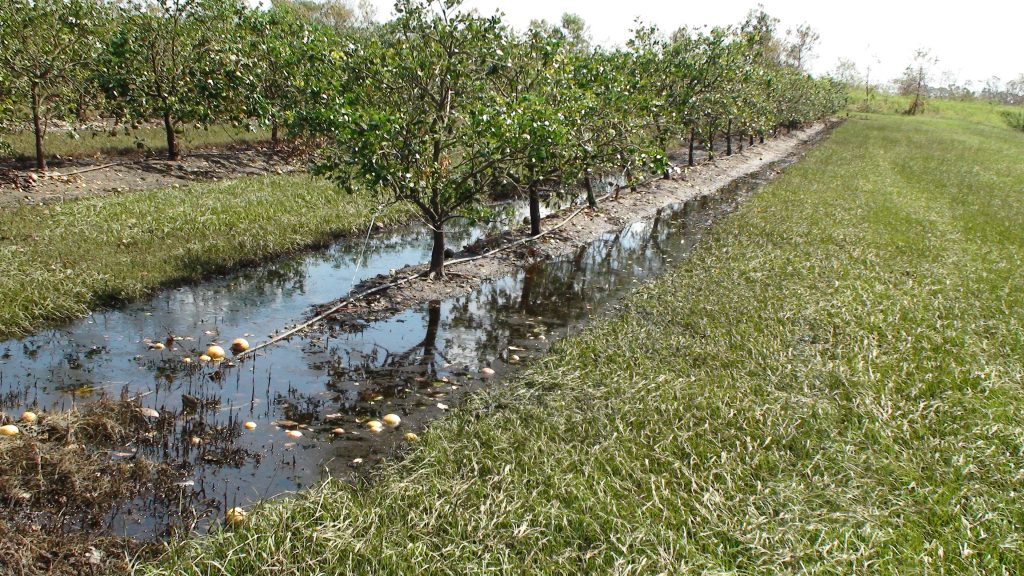
By: Brad Buck, 813-757-2224 (office); 352-875-2641 (cell); bradbuck@ufl.edu
Like all farmers, Florida’s citrus producers must prepare for the worst before a hurricane strikes. That’s why Fernando Alferez co-wrote a manual that gives growers tips on how to get their citrus farm ready for – and recover from — the potentially dangerous storms.
It’s not just coastal counties, where the storms hit first, that are right in the path of destruction. Even inland areas, where much Florida citrus grows, are vulnerable.
“Hurricanes are very big systems, and their impacts often extend hundreds of miles away from the eye,” said Alferez, an assistant professor of horticultural sciences at the UF/IFAS Southwest Florida Research and Education Center. “One would tend to think that Southwest Florida is most prone to hurricane damage and think about Irma in 2017 or Wilma in 2005. Those were devastating for the southwest part of Florida.”
But commercial citrus operations throughout Florida can experience a hurricane’s wrath. Hurricanes Charley, Frances and Jeanne struck Florida in 2004. They impacted mostly the central Florida citrus region. Hurricane Michael in 2018 impacted the mandarin-producing areas in the Panhandle, not to mention strikes in the east coast damaging the grapefruit industry, said Alferez.
To try to minimize damage to citrus farms, Alferez outlines the important aspects of preparing for a hurricane:
- Initial site planning is important. In general, ensure good drainage. Then, maintain the drainage infrastructure because flood prevention is key for citrus trees to survive.
- Know and take care of your farm. Have an inventory of everything in place and updated.
- Know your employees and care about them, train them and make sure you have insurance for the farm.
- Have an emergency plan that includes follow-up and recovery plans. Have a clear chain of command.
After the storm strikes — before you do anything else — make sure it’s safe to get into the farm. If it is, document all damage. That includes taking photos. This will help with insurance claims. Then, start grove and tree recovery.
Some citrus varieties seem to be able to withstand the storms better than others, Alferez said.
“What we have seen so far is that Swingle rootstock and trifoliate rootstocks behave well and are not easily uprooted,” he said. “On the contrary, rootstocks such as Flying Dragon and Volkameriana did not perform well.”
Alferez and Mongi Zekri, a multi-county specialized citrus agent for UF/IFAS Extension in Southwest Florida, co-authored the guide. They wrote the document after the U.S. Department of Agriculture Southeast Climate Hub asked Alferez to develop a technical manual for citrus producers to build resilience to and recover from hurricanes or tropical storms.
The request came after Alferez spoke at a conference in Gainesville in November 2018. There, he talked about the effects of Hurricane Irma on citrus production in Southwest Florida. From there, the Climate Hub decided to develop a technical manual to help producers — farmers, foresters and livestock/grazing land managers — in the southeastern United States build resilience to and recover from hurricane events.
“The end product would be a consolidation of the best available management practices on citrus into one uniformly designed manual that could be used by Extension agents to provide preparatory and recovery resource-specific guidance to citrus producers,” Alferez said.









